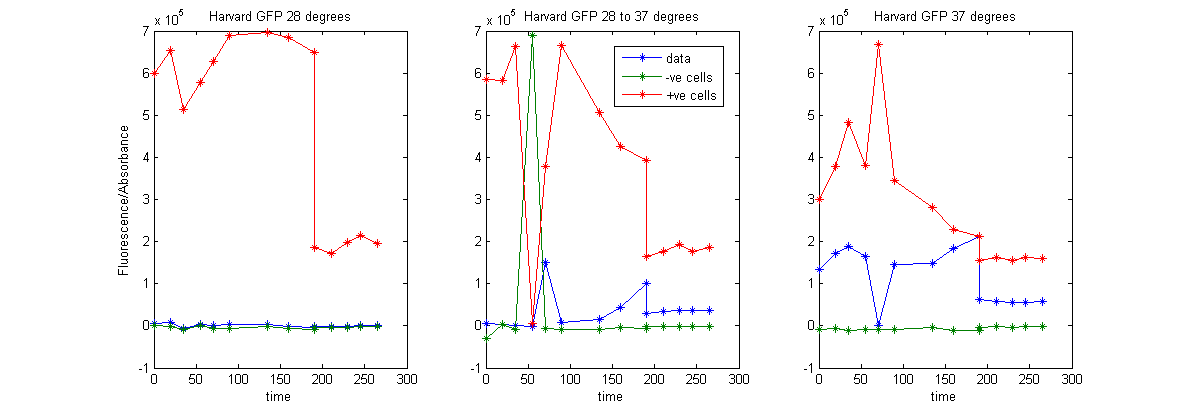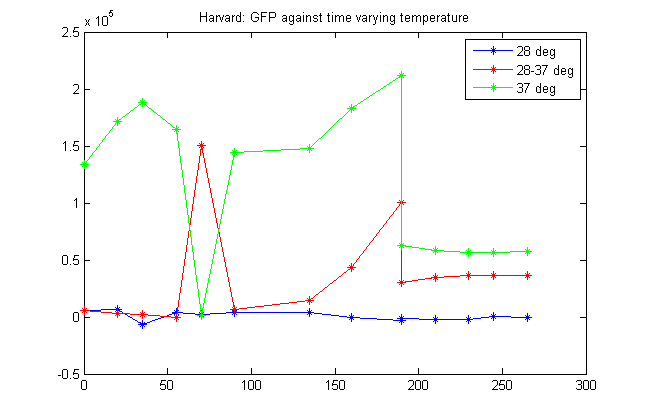Team:Imperial College London/Wetlab/Results/Thermoinduction/Harvard
From 2009.igem.org

In the experiment, 3 tests were temperature and fluorescence output was recorded for:
- Cells with the Harvard Biobrick
- Negative control
- Positive control
 Figure 1: Fluorescence trend for cells at 3 different temperatures (degrees celsius) with a negative and positive control
Figure 1: Fluorescence trend for cells at 3 different temperatures (degrees celsius) with a negative and positive control
From figure 1, no immediate trend is apparent.
However, if we study figure 2 more closely without looking at the controls, we can see that as temperature is increased, fluorescence count increases too.
However, there are several artefacts in the data.

Figure 2: Fluorescence trend for cells at 3 different temperatures (degrees celsius)
Conclusion:
When temperature increases, the repression of the Harvard promoter is lifted and genome deletion by thermoinduction can take place. This can be observed by a higher fluorescence measure when the temperature rises.
 "
"



